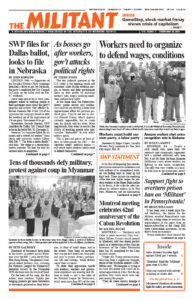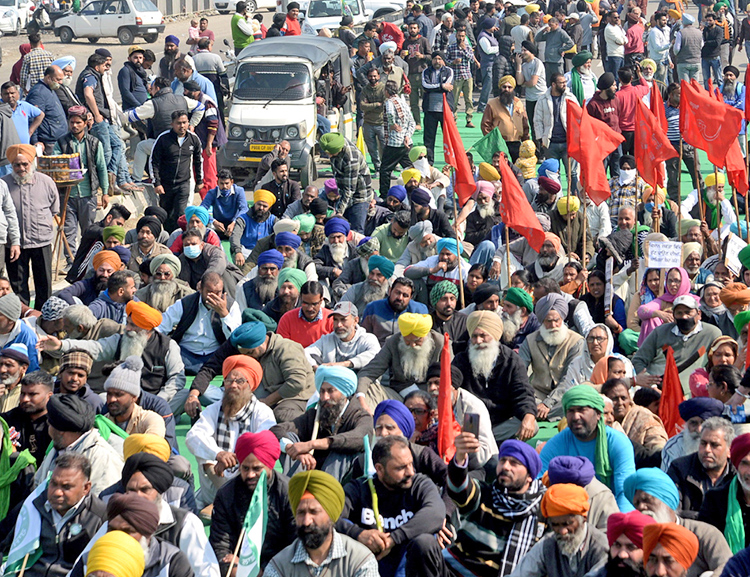“There were farmers from different communities — Haryanis, Punjabis, other states,” Jagtar Singh, a working farmer from Mandiani, a village of 2,000 in Punjab, India, told the Militant by phone Feb. 6. He was describing the encampments set up by tens of thousands of Indian farmers on the outskirts of New Delhi to protest Prime Minister Narendra Modi’s laws that threaten their livelihoods.
“I liked the whole atmosphere of how we were united,” he said. Singh, who grows wheat and rice on his 12 acres of land, has joined the Singhu protest camp on three occasions.
Farmers and their supporters are demanding the government rescind laws that would end state-backed minimum prices farmers receive for their produce.
The laws are a profit bonanza for big capitalist traders, allowing them to push down crop prices, driving thousands of farmers into greater indebtedness or off the land altogether. “They want the big companies to farm and let poor farmers work there on wages,” Singh’s son, Gursimran, told the Militant in the same interview.
“I am planning to go to the camps in a few days,” he said. “There are also lots of protests locally.” Over 10,000 roadblocks were put up by farmers for several hours across highways around the country Feb. 6. They used trucks, tractors and boulders to create barriers.
“Almost 40 people from our village went to the protest on Jan. 26,” in New Delhi on India’s Republic Day, Gursimran Singh said proudly. They joined over 200,000 farmers with 35,000 tractors — driving and marching into the capital despite police attempts to restrict their movements. Cops used tear gas, water cannons and baton charges.
In the following days the government deployed thousands of security forces to construct barricades, trying to hem in the farmers’ three main protest camps.
“Police pushed long spikes into the roads,” Gursimran Singh said, “but the rods were pulled up by farmers.” The attempt “to scare farmers failed.”
“The government is blocking the internet for the protest camps,” he pointed out, because they don’t want farmers to communicate or hear about the support their actions are getting from other working people, in India and elsewhere.
The government and much of the media “claim the farmers’ movement is a separatist or religious movement,” and “not for the rights of people,” said Gursimran Singh. But the fact is “most of the protesting farmers are Sikh because they are the ones being targeted today.”
State-backed minimum support prices are most extensively used in Sikh-majority Punjab and neighboring Haryana. But Modi’s laws “will harm Hindus and other farmers as well,” he pointed out.
In the state of Bihar, where price supports were ended 15 years ago, many farmers have lost their land. Laborers working in Punjab today often come from Bihar, he said.
Some Sikh separatists did take part in the farmers’ Jan. 26 New Delhi protests.
“In 1984, a separatist Khalistan movement erupted over severe discrimination” faced by Sikhs, Gursimran Singh explained. Prime Minister Indira Gandhi ordered a military operation, massacring thousands of Sikhs at the Golden Temple and other temples in Punjab. Gandhi was assassinated by two of her Sikh bodyguards, triggering a further wave of anti-Sikh pogroms by Hindu chauvinist gangs.
The provocative pro-separatists who used the New Delhi action to push their agenda weaken the farmers’ movement. Today’s protests “are not related to religion,” Gursimran Singh said, but are “for the whole country.”
India is home to people from many nationalities and religions. Half the country’s 1.3 billion people live in the countryside as farmers or landless laborers. Its ruling capitalist families foster divisions, like the British colonial rulers did before them, to prop up their domination. The farm movement begins to cut across these rifts, Gursimran Singh said. “Farmers are more united,” because of the action they’ve taken.
Katy LeRougetel in Montreal contributed to this article.


